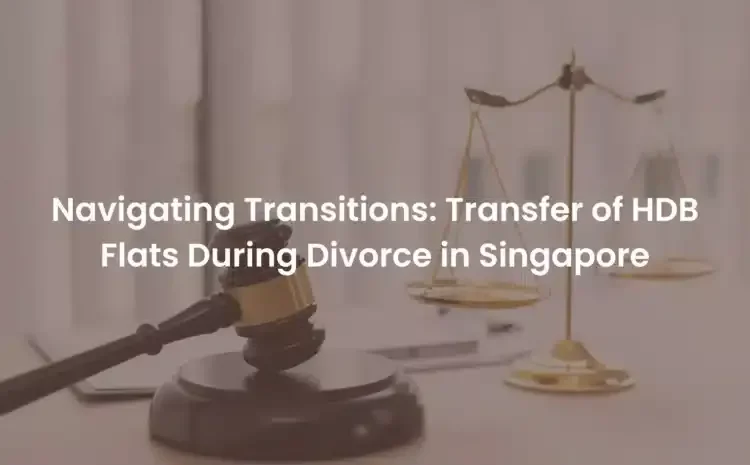Navigating Transitions: Transfer of HDB Flats During Divorce in Singapore
Introduction:
Divorce is a life-altering event, and when it involves the division of assets like a Housing and Development Board (HDB) flat in Singapore, the process becomes even more complex. In this blog post, we’ll delve into the intricacies of the transfer of HDB flats during a divorce in Singapore, shedding light on the regulations, considerations, and steps involved.
Understanding the Basics:
HDB flats are a common choice for married couples in Singapore, and the transfer of ownership becomes a crucial matter when a marriage dissolves. The Housing and Development Board, cognizant of the challenges that divorcing couples face, has established guidelines to facilitate the fair and equitable transfer of HDB flats.
Occupancy Period and Eligibility:
Similar to Built-to-Order (BTO) flats, HDB flats have a Minimum Occupation Period (MOP) during which the couple must reside in the flat. If the couple decides to divorce before completing the MOP, special conditions apply for the transfer of ownership.
Divorce Proceedings:
The divorce proceedings in Singapore play a significant role in determining the fate of the HDB flat. Legal dissolution is a prerequisite for the transfer of ownership, and the court will issue a judgment detailing the division of assets, including the HDB flat.
Agreement Between Ex-Spouses:
In some cases, divorcing couples may come to an amicable agreement regarding the transfer of the HDB flat. This could involve one spouse buying out the other’s share or a mutually agreed-upon arrangement. It is essential to document such agreements to avoid future disputes.
HDB’s Consent for Transfer:
Before any transfer can take place, the HDB’s consent is required. Both parties must submit the necessary documents, and the HDB will assess the eligibility of the spouse retaining ownership based on citizenship status and financial capability.
Outstanding HDB Loan and CPF Contributions:
Outstanding HDB loan payments and Central Provident Fund (CPF) contributions are critical financial considerations during the transfer process. The couple must agree on the distribution of these financial obligations, and legal and financial advice is recommended to ensure a fair arrangement.
For divorces, refunding the outgoing owner’s CPF account is not necessary if both parties agree to this. The remaining owner can make a partial refund or no refund to the outgoing owner’s CPF account upon the transfer to the remaining owner.
Post-Transfer Considerations:
The spouse who retains ownership post-transfer may choose to continue residing in the HDB flat or explore alternative housing options. The ex-spouse, meanwhile, must plan for their accommodation post-transfer.
Conclusion:
The transfer of HDB flats during a divorce in Singapore involves a multifaceted process, encompassing legal, financial, and emotional considerations. It is imperative for divorcing couples to be well-informed about the HDB’s regulations, seek professional advice, and communicate openly to arrive at equitable solutions. While the end of a marriage may be challenging, a clear understanding of the transfer process can pave the way for a smoother transition to new beginnings. Our lawyers have much experiencing handling issues in relation to divorces and HDB flats. Contact us at 8780-2499 to learn more.

